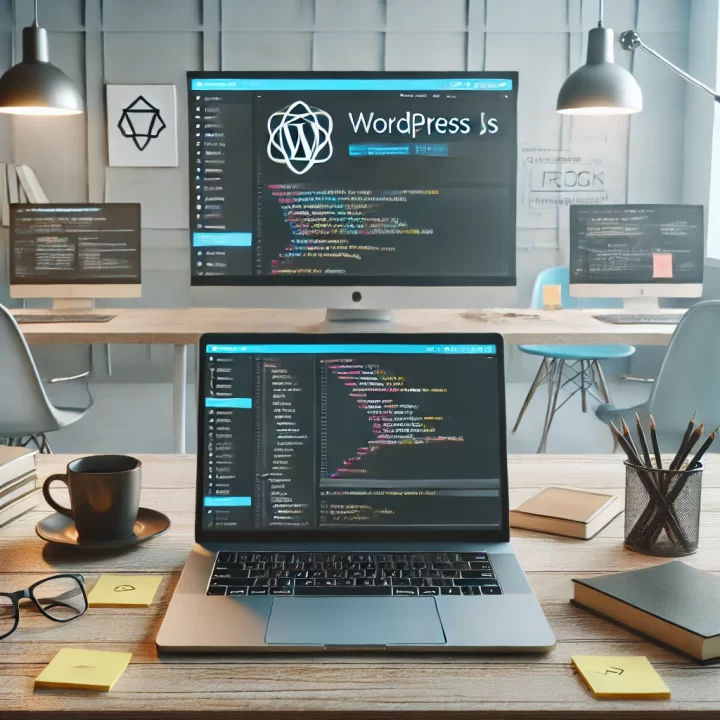Steps to Build a Stunning WordPress Theme with React JS
Introduction

Why Use React JS for WordPress Themes?
- Improving performance with a fast-rendering virtual DOM.
- Creating dynamic and interactive UI components.
- Offering a component-based architecture for reusable code.
- Ensuring seamless integration with the WordPress REST API.
Step-by-Step Guide to Building a WordPress Theme with React JS
Step 1: Set Up Your WordPress Environment
- Install Local WP or use XAMPP/MAMP.
- Download and set up the latest version of WordPress.
- Create a new theme directory in wp-content/themes/your-theme-name/.
Step 2: Install React and Set Up a Frontend Project
React requires a separate project structure. Set it up using:
npx create-react-app your-theme-react cd your-theme-react npm start
This initializes a React project with a development server.
Step 3: Connect React with WordPress
To serve your React app in WordPress, follow these steps:
- Build Your React App
npm run build
This generates static assets in the build folder.
- Move the Build Folder Copy the contents of build to your WordPress theme directory.
- Load React in WordPress In functions.php, enqueue React scripts:
function theme_enqueue_scripts() {
wp_enqueue_script('react-app', get_template_directory_uri() . '/build/static/js/main.js', array(), null, true);
wp_enqueue_style('react-style', get_template_directory_uri() . '/build/static/css/main.css', array(), null);
}
add_action('wp_enqueue_scripts', 'theme_enqueue_scripts'); Step 4: Fetch Data Using the WordPress REST API
React communicates with WordPress through the REST API. Fetch posts dynamically:
fetch("https://yourwebsite.com/wp-json/wp/v2/posts")
.then(response => response.json())
.then(data => console.log(data)); Step 5: Create a Custom React Component for Blog Posts
Example of a simple React component for displaying WordPress blog posts:
import { useEffect, useState } from "react";
function BlogPosts() {
const [posts, setPosts] = useState([]);
useEffect(() => {
fetch("https://yourwebsite.com/wp-json/wp/v2/posts")
.then((res) => res.json())
.then((data) => setPosts(data));
}, []);
return (
<div>
{posts.map((post) => (
<div key={post.id}>
<h2 dangerouslySetInnerHTML={{ __html: post.title.rendered }} />
<p dangerouslySetInnerHTML={{ __html: post.excerpt.rendered }} />
</div>
))}
</div>
);
}
export default BlogPosts; Step 6: Deploy Your React-Based WordPress Theme
- Ensure the React app is properly integrated in the theme.
- Upload the theme folder to wp-content/themes/.
- Activate the theme in WordPress Admin > Appearance > Themes.
- Test the site for responsiveness and performance.
Example: Creating a React-Based Theme Structure
Here’s an organized directory structure for a React-based WordPress theme:
your-theme/ │── build/ # React build output │── template-parts/ # PHP files for templates │── index.php # WordPress main template │── style.css # Theme stylesheet │── functions.php # Enqueue scripts & styles │── header.php # Theme header │── footer.php # Theme footer
Optimizing Your React-Based WordPress Theme
To maximize performance:
- Use code splitting with React.lazy() and Suspense.
- Optimize images with the next-gen format (e.g., WebP).
- Implement lazy loading for components.
- Enable caching for API calls.
Conclusion
Integrating React JS with WordPress can transform a static theme into a dynamic, fast, and interactive experience. By following this step-by-step guide, you can build a modern, stunning WordPress theme tailored to today’s web standards.
For more tutorials on WordPress and React development, check out Ajay Khandal’s blog and explore insightful articles like:
Do You Have An Interesting Project?
- Want To Get Started?
